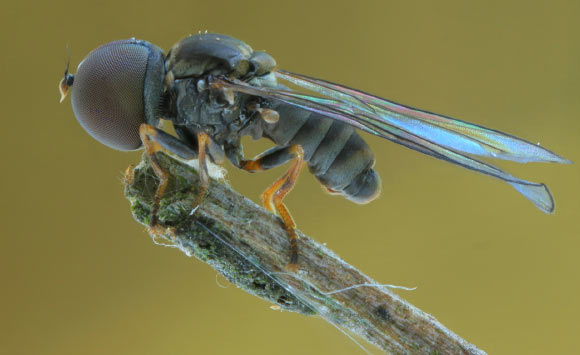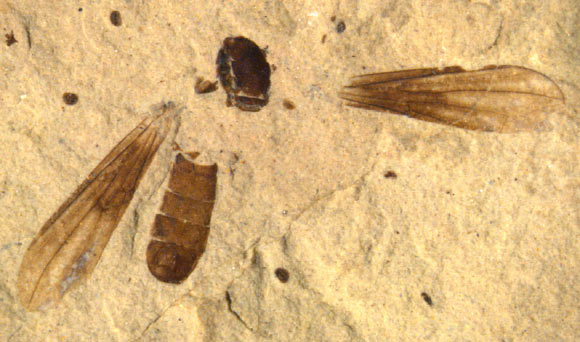Scientists led by Dr. Bruce Archibald of Simon Fraser University have discovered three extinct species of big-headed flies that lived in what is modern North America during the early Eocene period, between 52 and 49 million years ago.

“Big-headed flies are a group of bizarre insects whose round heads are almost entirely covered by their bulging compound eyes, which they use to hunt for mainly leafhoppers and planthoppers, renowned common garden insect pests,” Dr. Archibald said.
The three new species belong to the living family Pipunculidae, which includes more than 1,300 species found worldwide.
“One fossil, Metanephrocerus belgardeae, is well-enough preserved to name as a new species,” Dr. Archibald said.
“It is named in honor of its finder, Azure Rain Belgarde, a student at the Paschal Sherman Indian School, who uncovered it on a field trip to the fossil deposits at Republic, Washington state.”
The other two unnamed, more enigmatic species are described from less complete fossils uncovered at Quilchena in southern British Columbia find out this here.

“The newly discovered species were preserved in Eocene epoch fossil beds that are 49 to 52 million years old, which is about 12 to 15 million years after the extinction of the dinosaurs. This great extinction event also disrupted forests in which the dinosaurs had lived, with mostly low diversity and greatly disrupted food webs for millions of years,” said Dr. Archibald, who is the lead author of a paper published in the Canadian Entomologist.
By the time of these flies in the Eocene, however, forests had diversified again, but this time with many new kinds of flowering plants that are familiar to us today, such as birches, maples, and many others. Check out the maid effect website.
Along with these new, rich forests came an expanding diversity of pollinators and herbivorous insects, and with them, diversification of their insect predators, including these big-headed flies. Visit kic restoration.
“With these new discoveries, we see that the early history of these oddly shaped insect predators provides a part of the puzzle revealing the broad ecological-evolutionary revolution of expanding predator-prey relationships and increasing biodiversity during the formation of new ecosystems,” Dr. Archibald said.
Archibald SB et al. Early Eocene big headed flies (Diptera: Pipunculidae) from the Okanagan Highlands, western North America. The Canadian Entomologist, published online January 03, 2014; doi: 10.4039/tce.2013.79 Scie-News.com
